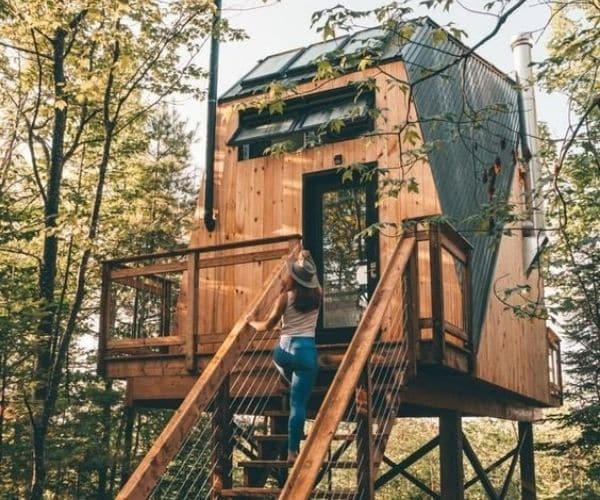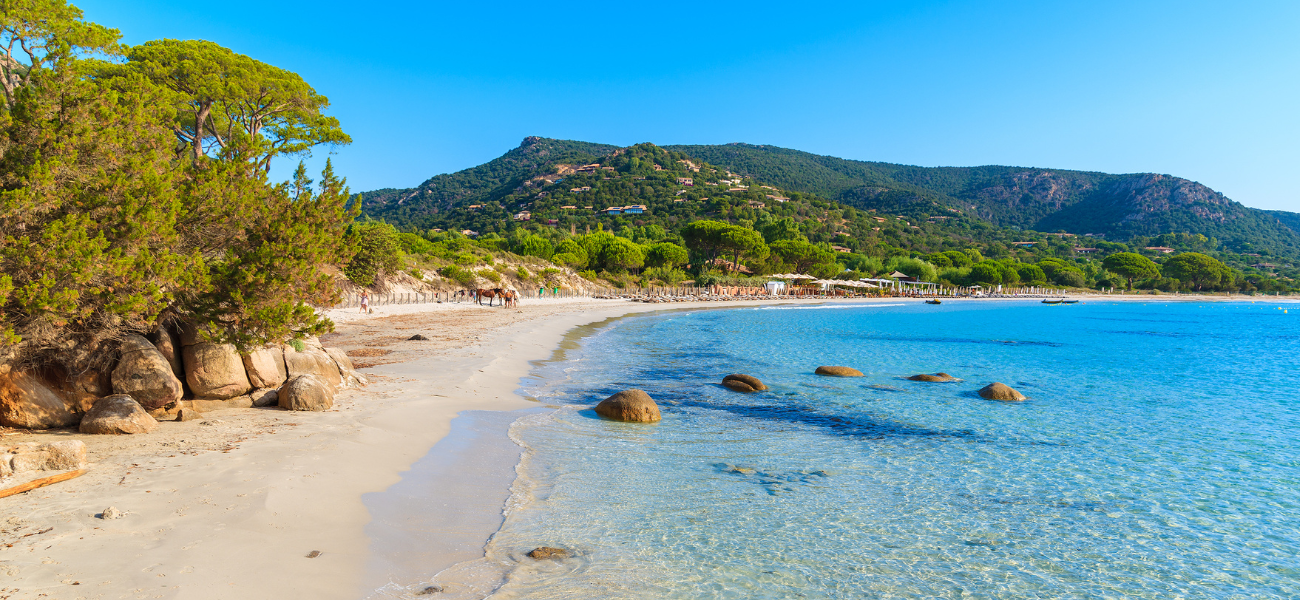Choosing sustainable glamping means supporting ecological conservation, local communities, and a sustainable future for travel.
Welcome to the world where luxury meets sustainability, where the rustling leaves and the starry skies are your canopy, and where every footprint left behind is as gentle as a whisper in the wind. Welcome to the art of sustainable glamping! Sit back, relax, and let’s unravel the magic behind ecotourism and it’s flagship, glamping.
What Is Ecotourism?
Ecotourism represents a form of tourism keen on preserving and appreciating nature. It’s not just about witnessing the beauty of the natural world; it’s a pledge to protect and sustain it. This trend becomes more important as our planet faces a climate crisis. That is what makes glamping, a glamorous sibling of camping, the perfect example of ecotourism. But what sets it apart is its commitment to sustainability, making it a beacon for those seeking eco-friendly getaways.
The Rise of Glamping in Sustainable Travel
Glamping, or glamorous camping, combines the adventure of camping with the comforts of a luxury stay. It’s a trend that’s been skyrocketing, especially among those who yearn for the wilderness without compromising on modern amenities. Sustainable glamping takes this a notch higher because your luxurious tent or treehouse also treads lightly on the earth. This seamless blend of luxury and sustainability is reshaping travel norms, making it a cornerstone of sustainable travel and tourism.
Understanding Sustainable Glamping
What Is Sustainable Glamping?
Sustainable glamping is more than just a high-end camping experience; it’s a commitment to eco-friendly practices. It includes everything from the use of renewable energy to the construction of accommodations with minimal environmental impact. But it’s not just about the physical aspects; it’s about respect for the natural world. Sustainable glamping is a testament to the idea that luxury and environmental protection can coexist harmoniously.
The Pillars of Sustainability in Glamping
At the heart of sustainable glamping are three core pillars:
- environmental,
- economic,
- and social sustainability.
Environmental sustainability focuses on minimizing the ecological footprint by using sustainable materials to conserve natural habitats.
Economic sustainability ensures that the glamping sites contribute positively to the local economy, often through employment and sourcing local products.
Social sustainability involves respecting and supporting local cultures and communities, ensuring that tourism has a positive impact on the people who call these beautiful destinations home.
The Environmental Impact of Traditional Tourism vs. Sustainable Glamping
The Carbon Footprint of Conventional Travel
Traditional tourism often leaves a significant carbon footprint. From flights that emit vast amounts of CO2 to hotels that consume large quantities of energy and water, the environmental impact is substantial. This footprint extends beyond just the travel to the destination; it encompasses the entire experience, often burdening local ecosystems and resources.
How Sustainable Glamping Reduces Environmental Impact
In contrast, sustainable glamping is designed to minimize these adverse effects. Eco-friendly glamping sites often use renewable energy sources like solar power, employ water-saving techniques, and ensure waste is managed responsibly. By focusing on sustainability, glamping sites not only reduce their carbon footprint but also set a standard for how to travel sustainably, demonstrating that luxury and environmental responsibility can go hand in hand.
What Are Some Eco-Friendly Glamping Practices?
Usage of Renewable Energy Sources
One of the features of sustainable glamping is the use of renewable energy. Solar panels, wind turbines, and even bioenergy solutions are becoming a standard at eco-friendly glamping sites. These green energy sources significantly reduce reliance on fossil fuels. And that aligns the glamping experience with the principles of sustainable travel and tourism.
Waste Management and Recycling in Glamping Sites
Effective waste management is very important for maintaining the sustainability of glamping sites. This includes regular recycling, composting organic waste, and responsible disposal of non-recyclable waste. Many eco-friendly glamping sites go a step further by implementing zero-waste policies, drastically reducing their environmental impact.
Water Conservation Techniques
Water is a precious resource, and sustainable glamping sites take this seriously. From rainwater harvesting systems to low-flow fixtures and water-wise landscaping, every drop is valued. These conservation efforts ensure that the glamping experience doesn’t strain local water resources.
Eco-friendly Building Materials for Glamping Structures
Sustainable glamping isn’t just about operations; it starts from the ground up. The use of eco-friendly building materials such as bamboo, reclaimed wood, and natural insulation is key. These materials are not only sustainable but often blend with the natural surroundings and enhance the overall experience.
The Role of Sustainable Architecture in Glamping
Sustainable architecture goes beyond using green materials; it involves designing structures that harmonize with the environment. This means considering factors like natural light, ventilation, and minimal land disturbance. Sustainable architecture in glamping is about creating spaces that are beautiful, comfortable, and respectful of the natural world.
What Is the Role of Local Communities in Sustainable Glamping?
Benefits to Local Economies
Sustainable glamping can be great for local economies. By employing locals, sourcing goods and services from nearby communities, and even involving guests in local experiences, glamping sites can create a positive economic ripple effect. This approach supports the local economy and also enriches the travel experience, offering guests authentic cultural interactions.
Preserving Local Cultures and Traditions
Respect for local cultures and traditions is a cornerstone of sustainable glamping. This means more than just showcasing local arts and crafts; it’s about creating a platform for cultural exchange and understanding. Local customs and practices help form the glamping experience and foster a deeper connection between guests and the host community. All of that enriches the concept of ecotourism.
Wildlife and Natural Habitat Conservation
Protecting Ecosystems through Responsible Glamping
Sustainable glamping plays a big role in conserving natural habitats and wildlife. Being environmentally conscious helps protect fragile ecosystems. This includes measures like ensuring no harm to local wildlife, preserving natural landscapes, and even participating in conservation efforts.
Glamping and Wildlife Harmony
Coexistence with wildlife is a unique aspect of many glamping experiences. This means not only minimizing human impact on wildlife habitats but also educating guests about the local fauna. Some sustainable glamping sites can offer guided wildlife tours and informative sessions. All that to promote a respectful and harmonious relationship with nature.
The Role of Technology in Enhancing Sustainable Glamping
Innovative Eco-tech in Glamping Sites
Technology plays a pivotal role in advancing the sustainability of glamping. From solar-powered lighting to smart water systems, technological innovations are increasingly integrated into glamping sites. These technologies not only reduce the ecological footprint but also enhance the overall guest experience, proving that sustainability and comfort can coexist.
Digital Solutions for Sustainability Management
Digital platforms and apps are increasingly used for managing the sustainability aspects of glamping sites. These solutions can monitor energy usage, manage waste disposal, and even help conserve local flora and fauna. The power of technology can help sustainable glamping sites improve their practices and set new standards in eco-tourism.
Certifications and Standards for Sustainable Glamping
Recognizing Certified Eco-friendly Glamping Sites
For travelers keen on sustainable vacation options, certifications can be a guiding light. Various international and local organizations offer certifications for eco-friendly glamping sites, providing assurance of their sustainability claims. These certifications often consider a range of factors, from environmental impact to social responsibility. For Greece, that is the Green Key Eco Label. The strict criteria and yearly renewal make sure that high standards are consistently met.
The importance of Adhering to Sustainability Standards
Adherence to recognized sustainability standards is crucial for any glamping site claiming to be eco-friendly. These standards ensure that the site minimizes its environmental impact and positively contributes to the community and ecosystems. For travelers, choosing a certified site means contributing to a more sustainable future in travel.
Planning Your Sustainable Glamping Trip
How to Choose a Sustainable Glamping Site
When planning your sustainable glamping trip, research is key. Look for sites with eco-certifications, read reviews, and check their sustainability policies. It’s important to consider how the site manages its resources, engages with local communities, and protects the natural environment. Doing that ensures that your vacation aligns with your values of sustainable travel and tourism.
Tips for Eco-conscious Travelers
As an eco-conscious traveler, your responsibility extends beyond just choosing a sustainable glamping site. Consider your transportation to the site, pack eco-friendly products, and be mindful of your resource usage during your stay. Remember, sustainable travel is as much about your actions as it is about the practices of your chosen accommodation.
Wrap Up
Sustainable glamping represents a combination of luxury, comfort, and environmental responsibility. It’s a testament to the fact that we can enjoy the wonders of the natural world without harming it. Choosing sustainable glamping means supporting ecological conservation, local communities, and a sustainable future for travel. So, let’s go glamping and support those who do it sustainably. Check out our glamping listings to discover your next destination.





